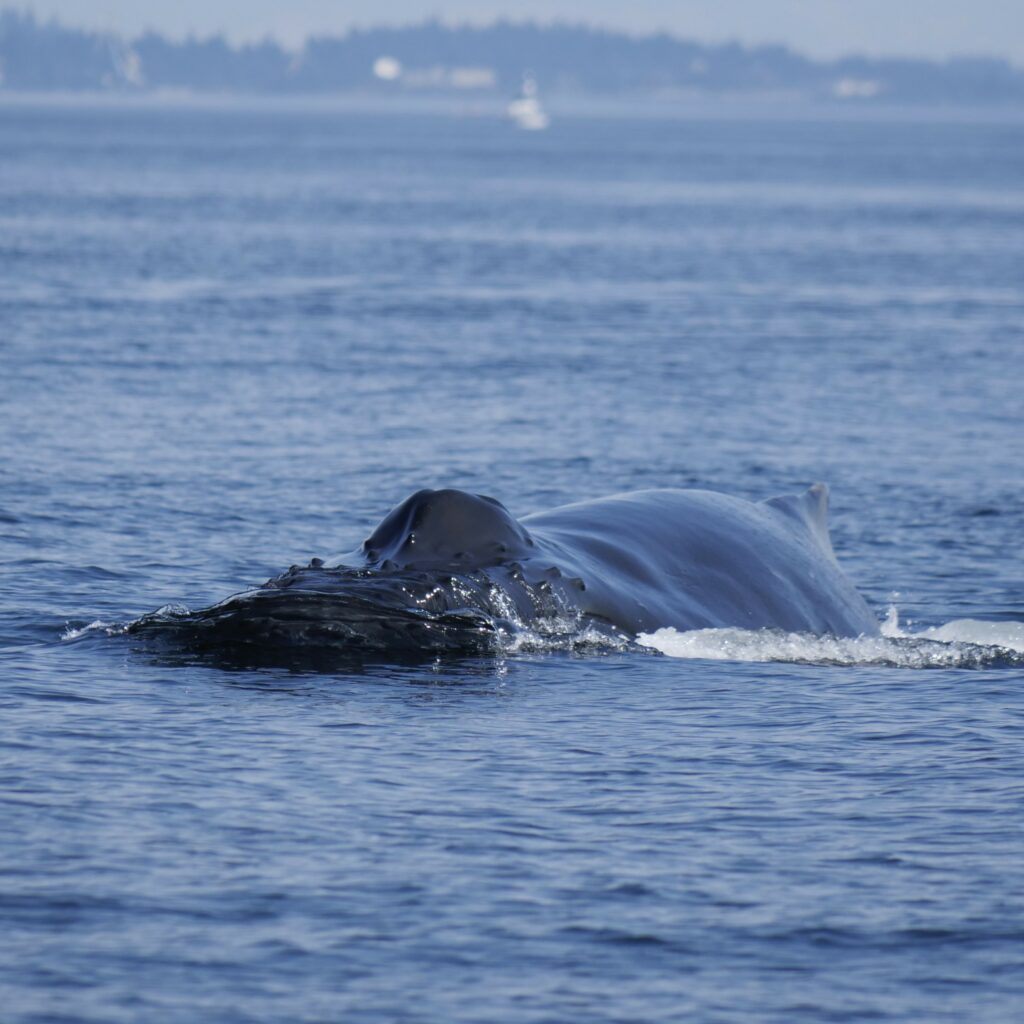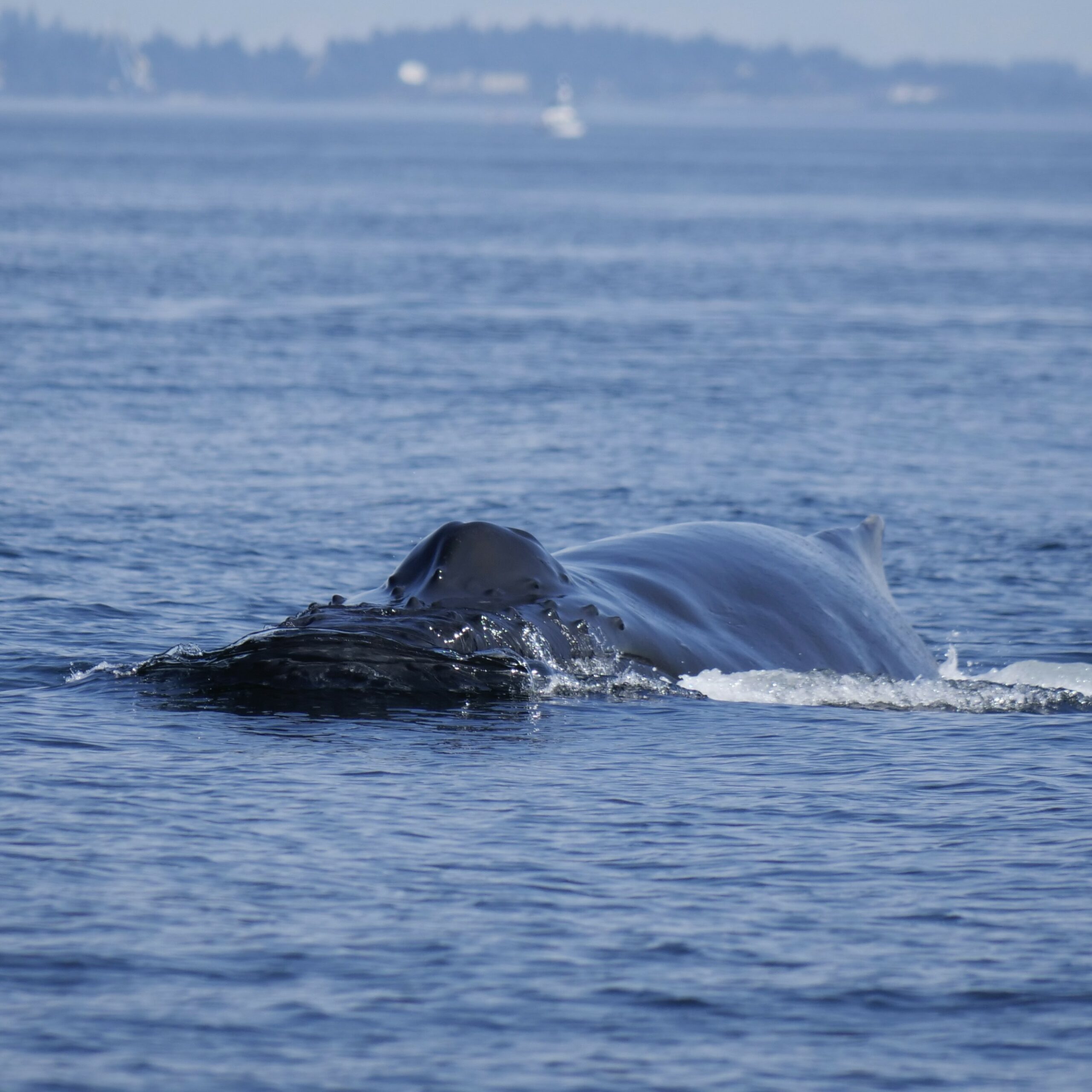Pectoral fins, head, throat and tail, all covered in bumps! Just a teenager with bad acne you might think? Well you couldn’t be more wrong when it comes to these angels of the sea…
Heads Up.

Let’s start from the head and work our way down. The head of a humpback whale is about 2.5m in size and has a symmetrical distribution of what look like bubbles on it. These are tubercles. Each one of these tubercles is about the size of your fist and encases one or two hairs called vibrissae. It is thought that these hairs are most likely used to help the whale feel different vibrations in the water column. It’s like an extra sense that helps them build up a finer picture of their surrounding environment.

Groovy Baby! Groovy!

Moving down the body to the throat we see huge grooves or pleats that extend from the chin to the navel area of the animal. These grooves can be seen on other whales such as: the Blue whale, the Fin whale and Sei whale to name just a few. A Humpback whale can have anywhere between 14-35 of these pleats along its neck. The grooves have an important function, to help increase the volume of the mouth area and therefore the amount of potential food these creatures can get in one gulp. Humpback whales are filter feeders which means each time they want to eat they start of by lunging, mouth open wide, into a huge group of krill, anchovies or other small schooling fish. As you can imagine, the small animals try and move out of the way which means the humpback whale is left with a lot of water. However, because of the increased volume that the throat grooves give the Humpbacks, less lunges per day are required to get the amount of food they need each day than if they did not have the grooves. Nifty!
Bumpy, Lumpy Fins

The pectoral fins on a Humpback whale are located just past the eye and in front of the halfway mark on the mammals’ body. They are the longest fins found on any species of cetacean and can be about one-third of the animal’s body size. That’s about 5m (16.4ft) on average! The appendages themselves are extremely movable at the joint and in turn that helps these graceful giants swim through the waters with ease. In addition, the leading and trailing edges of the fin is of course…bumpy! Just to confuse you a little bit these bumps are also called tubercles and there can be between 9 and 11 of these lumps on the edge of the pectoral fin. It has been proven that these tubercles help to reduce the drag on the whale and thus glide through the water in a more streamlined and controlled manner- much the same way that the small dents on a golf ball help to reduce its’ drag and make it fly through the air better.
A whales’ tail is composed of two lobes, each lobe can also be called a fluke. In humpbacks there is a very defined V-shaped notch where the two flukes meet to for the tail. The trailing edge of the tail has small serrations down the length with more fleshy rounded edges. These serrations probably have the same function as the tubercles on the pectoral fins.
These naturally occurring biological features that help the animal to overcome drag and hydrodynamic difficulties have been widely applied to all sorts of aircraft and wind turbines to help them overcome aerodynamic difficulties as well as improve efficiency.
Free loaders

You will often see photos of Humpback whales with clusters of what look like white/brown shells. These are in fact barnacles. It is believed that adult Humpback whales can have up to a 450kg of them on their bodies- that’s a lot of free riders! This may seem like a lot to you but to an animal that can weigh up to 40 tonnes it isn’t much at all. The barnacles tend to concentrate themselves in particular areas of the body: along the rostrum (upper jaw), lips, throat, flippers, tips of the tail flukes and even around the genital slits- ouch! The species of barnacle that grown on the Humpbacks skin directly are called acorn barnacles- Semibalanus balanoides. There is then a second species of barnacle which grow on top of the acorn species called, goose barnacles Pollicipes pollicipes. Barnacles are opportunistic filter feeders which means they try and grab as much nutrients as they can that floats past them with their hair ‘arms’. So, these organisms benefit greatly from living on an animal that is constantly moving, especially through the nutrient rich cool waters they spend their summers in.
All scarred up

Over the body of a Humpback whale you can find many, many scars. These come from a variety of different origins. The barnacles that have fixed themselves to the skin of the humpbacks are very sharp. This means when humpbacks are within close contact to each other they will likely cut themselves on the barnacles. This is why males often have more scarring of this kind than females. During mating, the males may push other males out of the way to gain the top position next to the female. Also, young calves will be seen with barnacle scarring as they try and stay within close proximity to their mothers.
Mother and calf pairings will also show more scars from killer whales. As the mother and calf pair make their long migration from the warm breeding and birthing grounds up to cooler waters for feeding pods of killer whales will try and take advantage of the vulnerable calf. These attacks can leave mothers exhausted and marked up as well as potentially without a calf.
An unusual animal you may not have heard of before, the cookie cutter shark, leaves its nasty circular scar upon these massive animals too. These deep-sea dwelling sharks live in warmer waters but rise from the depths to feast on the fresh meat of whales!
Humpback whales have a lot to their skin: lumpy, bumpy, groovy and scarred with quite a story to tell but we love them anyway!
Izzy David
Onboard Naturalist/Biologist for SpringTide Whale Watching & Eco Tours

